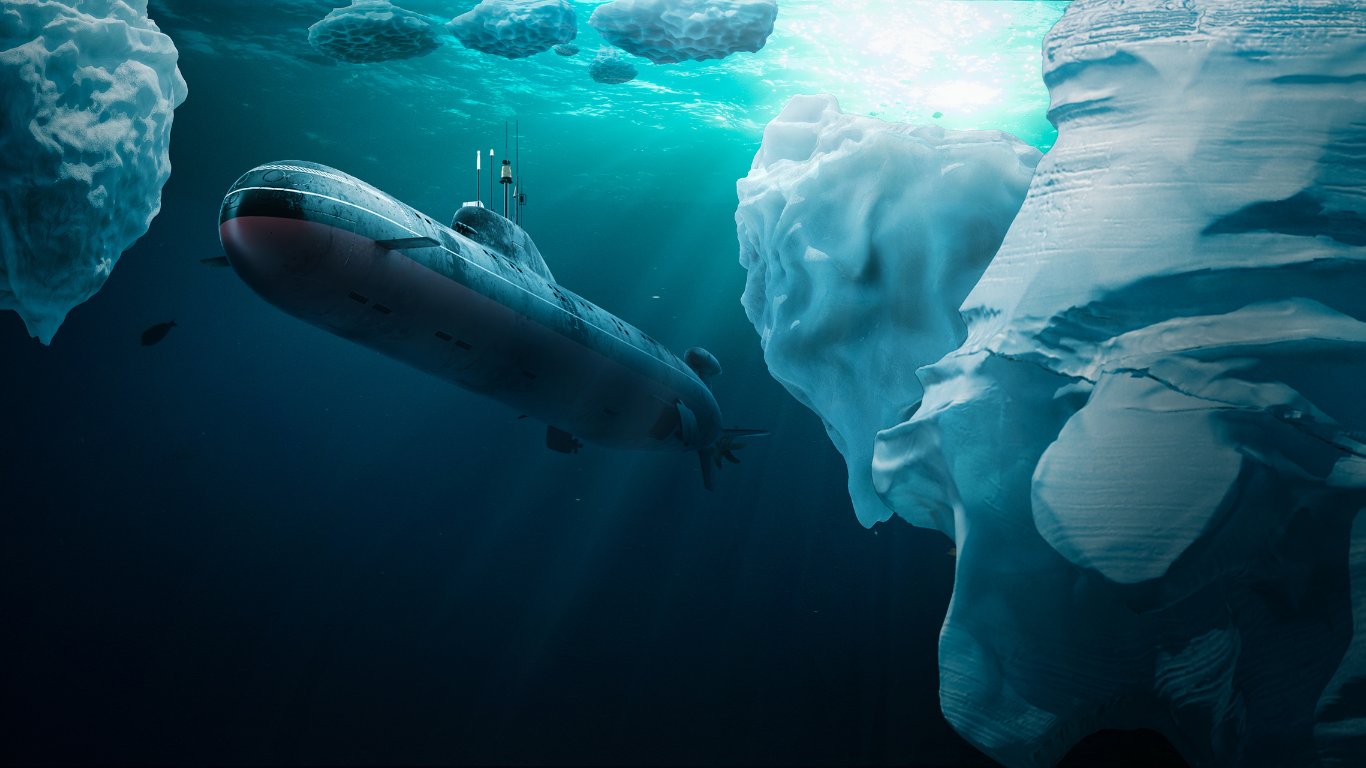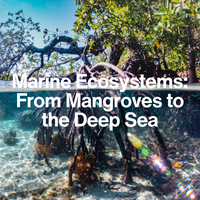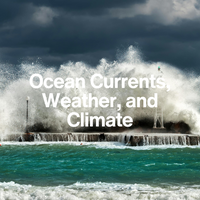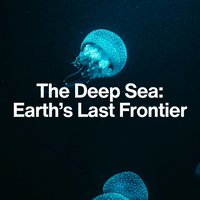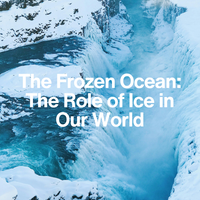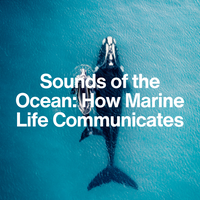LESSON 3
Hydrothermal Vents and Underwater Volcanoes
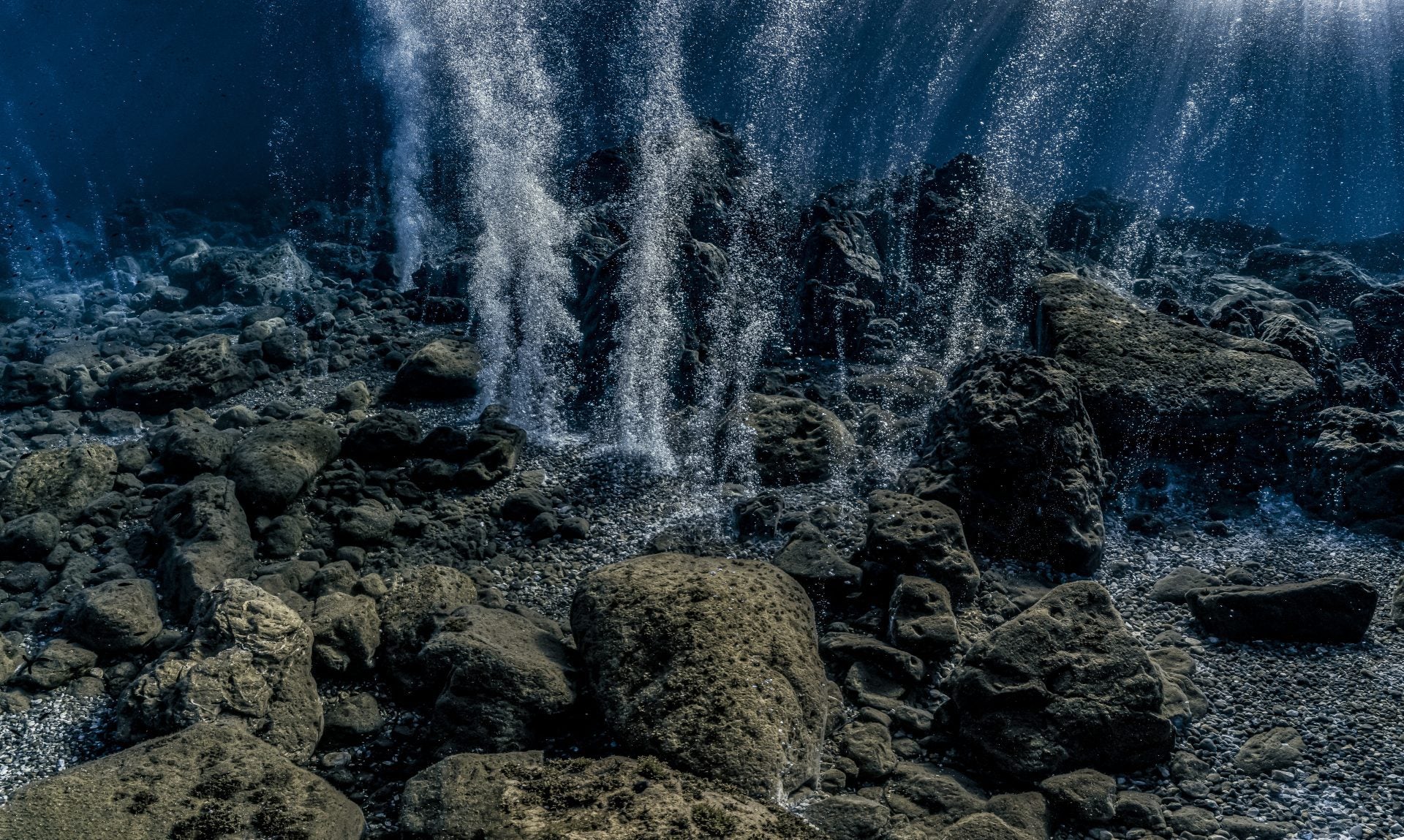
Welcome to one of the most extreme and otherworldly environments on Earth—the deep sea’s volcanic landscape.
Introduction:
Life at the Boiling Edge
Far below the ocean’s surface, where sunlight never reaches, lie cracks in the seafloor that release scalding, mineral-rich water. These are hydrothermal vents, and around them, entire ecosystems thrive—without the help of sunlight.
Even more dramatic are underwater volcanoes, which shape the seafloor and create new habitats. Though the deep ocean is cold and dark, it’s also alive with fire and heat.
Let’s explore this alien-like world where life thrives against all odds.
1. What Are Hydrothermal Vents?
Hydrothermal vents form when seawater seeps into cracks in the ocean floor near tectonic plate boundaries. The water is superheated by magma below the Earth’s crust and shoots back out, carrying minerals like iron, sulfur, and methane.
These vents don’t last forever—they can shift, collapse, or cool—but while they’re active, they support some of the most unique ecosystems on the planet.
Did you know?
These vents don’t last forever—they can shift, collapse, or cool—but while they’re active, they support some of the most unique ecosystems on the planet.
2. Life Without Sunlight: Chemosynthesis
Most ecosystems on Earth depend on photosynthesis—plants and algae use sunlight to make food. But in the deep sea, sunlight can’t reach. So how does life survive?
At hydrothermal vents, life is powered by a process called chemosynthesis. Instead of sunlight, bacteria use chemicals—like hydrogen sulfide, which pours out of vent openings—to create energy. These bacteria are the primary producers of this ecosystem, playing the same role as plants do on land.
The Base of the Food Chain
- Chemosynthetic bacteria live in mats on rocks, inside animal tissues, or even float freely in the water.
- Larger animals either eat the bacteria or form symbiotic relationships with them, meaning both species benefit.
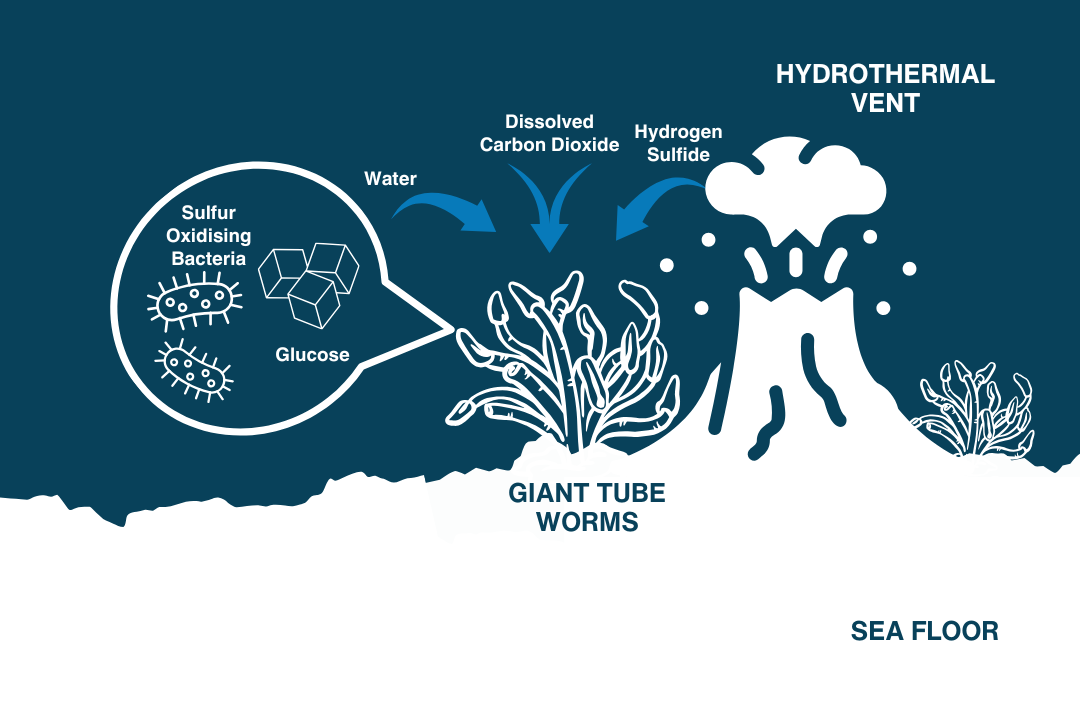
Fascinating Adaptations
Life around hydrothermal vents has evolved in astonishing ways to thrive without sunlight and in environments filled with toxic chemicals and extreme heat.
Giant Tube Worms (Riftia pachyptila)
These iconic deep-sea creatures can grow over 2 meters long and are among the most well-adapted vent dwellers. What makes them truly extraordinary is that they have:
- No mouth
- No stomach
- No digestive system at all
Instead, they rely entirely on a remarkable internal organ called the trophosome, which houses billions of chemosynthetic bacteria. These bacteria use hydrogen sulfide from the vent water—lethal to most organisms—and convert it into organic molecules the worm can absorb. It’s a perfect example of symbiosis, where both organisms benefit:
- The worm provides the bacteria with a safe home and a steady supply of vent chemicals.
- The bacteria, in turn, feed the worm.
Tube worms also have bright red plumes that stick out of their white tubes—these act like gills, absorbing oxygen, carbon dioxide, and hydrogen sulfide from the surrounding water, which are then delivered to the bacteria via the worm’s blood. (Their red color comes from a special kind of hemoglobin that can carry both oxygen and sulfide.)
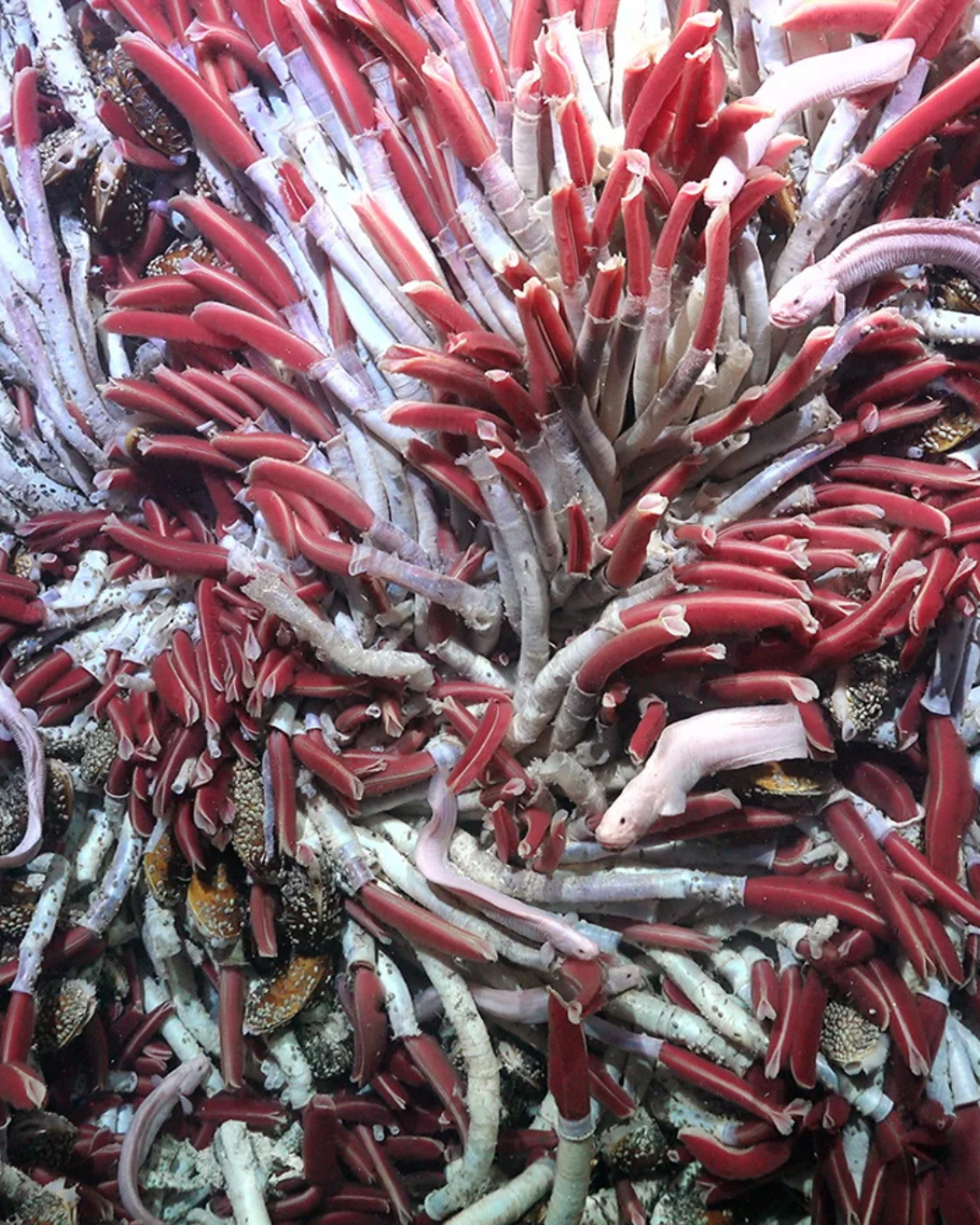
Giant Clams
These massive bivalves also thrive around hydrothermal vents, living in dense clusters. Unlike their shallow-water cousins that filter plankton, vent clams rely on symbiotic chemosynthetic bacteria housed in their gills.
- The bacteria convert chemicals into energy, just like in tube worms.
- In exchange, the clam gives them access to the chemicals and oxygen flowing through the gills.
Some species of vent clams, like those in the genus Calyptogena, grow quickly and live in nutrient-rich, high-temperature zones where other animals couldn’t survive.
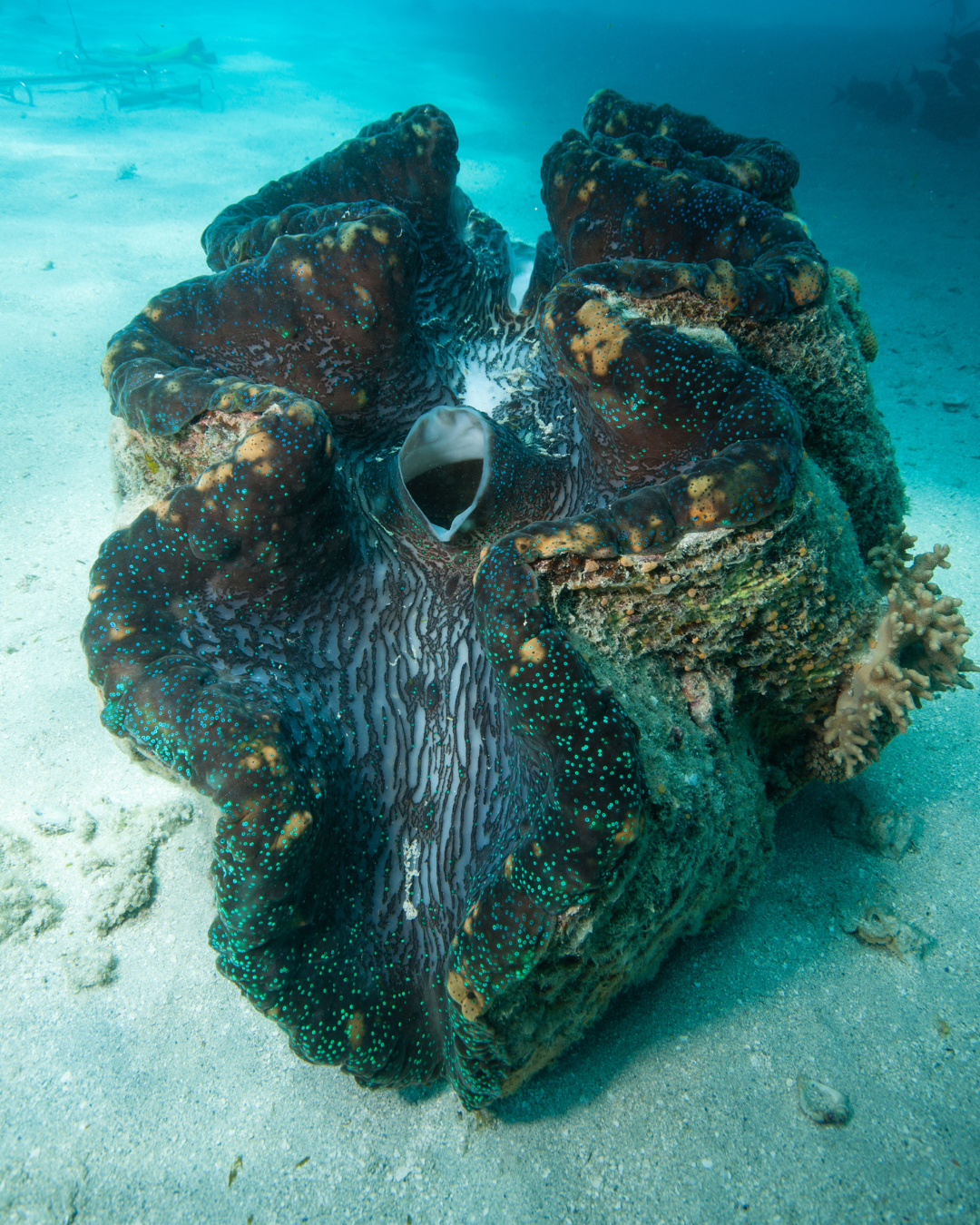
Why This Matters
These adaptations show how life finds a way—even in the most extreme environments. Rather than evolving to avoid toxic substances, these animals have partnered with microbes to turn poison into power.
Other Vent Dwellers
Fun Fact
The giant tubeworm (Riftia pachyptila) can grow over 2 meters long and survive in total darkness, thanks to its symbiotic bacteria.
3. Underwater Volcanoes: Mountains in the Abyss
The ocean floor is dotted with underwater volcanoes, especially along the Mid-Ocean Ridge—a chain of volcanoes over 65,000 km (40,000 miles) long.
These volcanoes:
- Create new seafloor through eruptions of molten lava.
- Shape the topography of the deep sea with ridges, vents, and trenches.
- Release gases and minerals that feed chemosynthetic life.
Occasionally, volcanic eruptions even form new islands if they reach the surface!
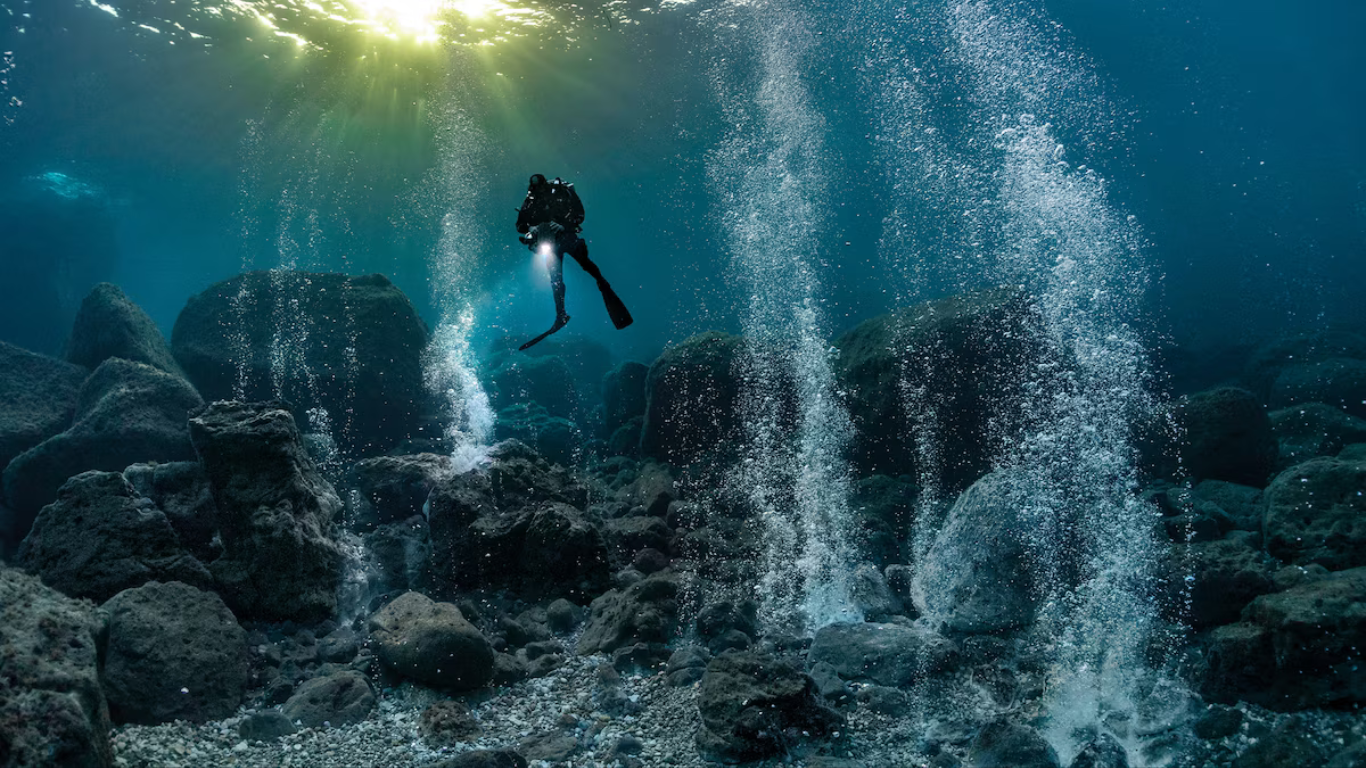
Did you know?
Around 80% of Earth’s volcanic activity happens underwater—but most of it goes undetected because it’s so deep.
4. Why These Habitats Matter
Hydrothermal vents and underwater volcanoes are more than geological curiosities—they are essential to understanding Earth and life itself. But they’re also vulnerable. Deep-sea mining and climate change threaten these ecosystems before we’ve even fully explored them.
Conclusion
Life from Fire and Fumes
Hydrothermal vents and underwater volcanoes reveal a deep-sea world powered not by sunlight, but by the Earth itself. In these harsh, alien environments, life has evolved astonishing adaptations—from microbes that turn toxic chemicals into energy, to animals like giant tube worms and vent clams that depend entirely on symbiotic relationships for survival. These vent ecosystems challenge everything we thought we knew about where and how life can thrive.
They also raise a powerful question: If life can survive here, could it exist in similar extreme environments on other planets or moons?
Key Takeaways:
Hydrothermal vents are deep-sea cracks that release superheated, mineral-rich water and support life through chemosynthesis, not sunlight.
Underwater volcanoes shape the seafloor and help create new habitats for deep-sea life.
Unique creatures like tube worms, vent crabs, and giant clams rely on bacteria that convert chemicals into energy.
These extreme environments may hold clues to Earth’s origins, life beyond our planet, and even future medical discoveries.
Protecting them is crucial, as they are both ecologically significant and scientifically invaluable.
NEXT LESSON
How Do Scientists Explore the Deep?
We’ll dive into the tools and technologies that help humans access the deep sea—like submarines, ROVs (Remotely Operated Vehicles), and deep-sea cameras.
